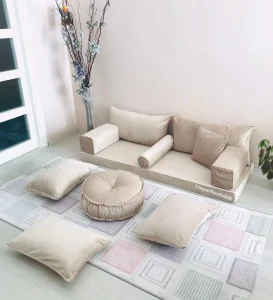The Best Way To Protect Your Bathroom From Water

A water damage disaster can be a traumatic event. Not only is it important to protect your property from water damage, but it is also crucial to protect your family and pets.
Install a Water Damage Prevention System
A water damage prevention system can aid in the avoidance of water damage in your bathroom. Waterproofing membranes, watertight seals, and drainage systems are all possible components of a water-proofing system for your bathroom. A waterproofing membrane can be applied to the bathroom’s walls and floor. This will assist keep water out of the room and away from the items. All doors and windows leading into the bathroom can be sealed with a waterproof seal. This will assist to keep water out of your bathroom, keeping it dry. Finally, in the case of a leak or overflow, a drainage system might be added to prevent flooding. You can ensure that your bathroom is safeguarded no matter what occurs by combining these measures.
Protecting Your Bathroom With a Waterproofing Specialist
There are a few ways you can protect your bathroom. You can install a professional system, or you can DIY it. A professional system will usually be more expensive, but it will protect your bathroom in the long run. DIY systems are cheaper and may be easier to install, but they may not last as long as a professional system. Find a professional contractor, such as Roof Doctors, to protect your bathroom with a quality waterproofing system.
Check for Leaks and Repair Them If Necessary
Bathroom leaks can be a nuisance, but they can also cause serious damage to your home. If you notice any water seeping from the ceiling, walls, or floor, it’s important to check for leaks and repair them if necessary. You can also try installing a rain gutter to catch water before it enters your home.
Don’t overload the Plumbing System
If you have a large family, or if you frequently have guests over, it’s important to keep your bathroom plumbing system in good shape. Overloading the system can cause it to break down and eventually fail. Here are some tips on how to avoid overload:
– Make sure that all the faucets in your bathroom are turned off when you’re not using them. This will help conserve water and prevent overflow.
– Keep the sink clear: Clear out any clutter or excess items so that water can flow freely and easily. This will help prevent overflow and messes.
– Use a rain barrel: If your bathroom doesn’t have a sink, consider using a rain barrel to collect water runoff from the roof or gutters and use it for cleaning or watering plants. This will help conserve water while also preventing overflow in your bathroom.
– Install a low-flow showerhead: A low-flow showerhead uses less water than traditional showerheads, which can help conserve
– Don’t use the shower or bathtub for more than three consecutive minutes at a time. Doing so can cause water pressure to build up and overflow your plumbing system.
– If you notice water spilling out of your sink or shower, chances are that you’ve overloaded your plumbing system. Try reducing the amount of water flowing through your plumbing by turning off some of the faucets in your home.
Water damage can be a devastating event for any property, and it’s especially worrisome in bathrooms where water can quickly spread and cause extensive damage. By following these simple tips, you can help prevent a devastating water damage disaster in your bathroom.





